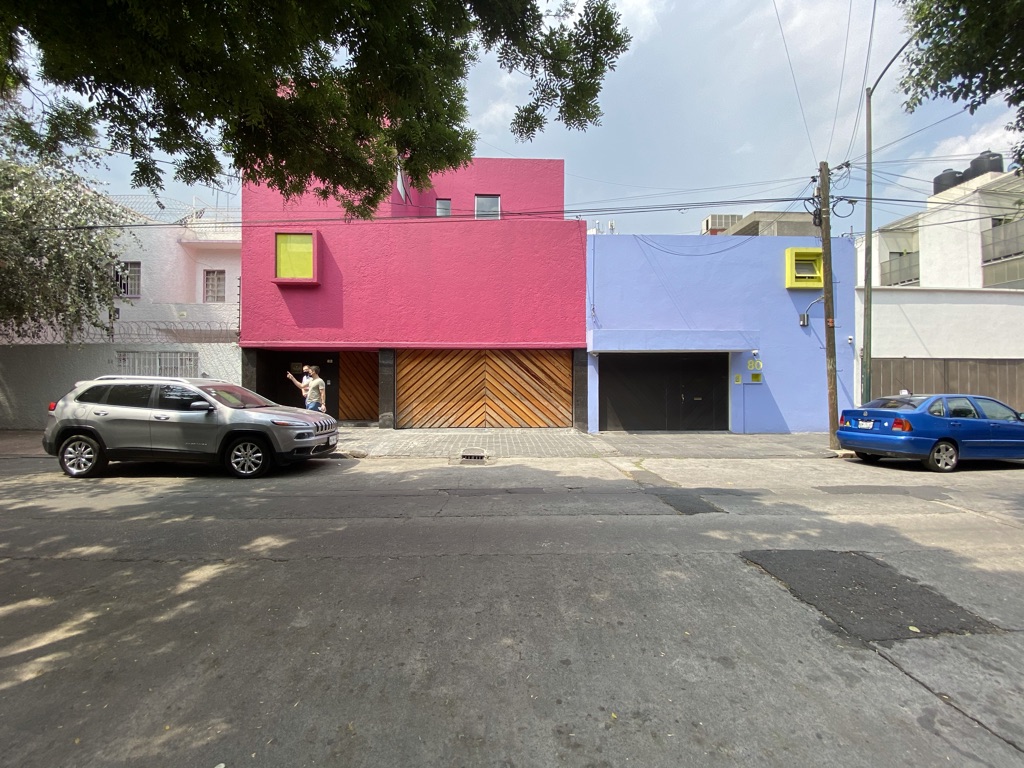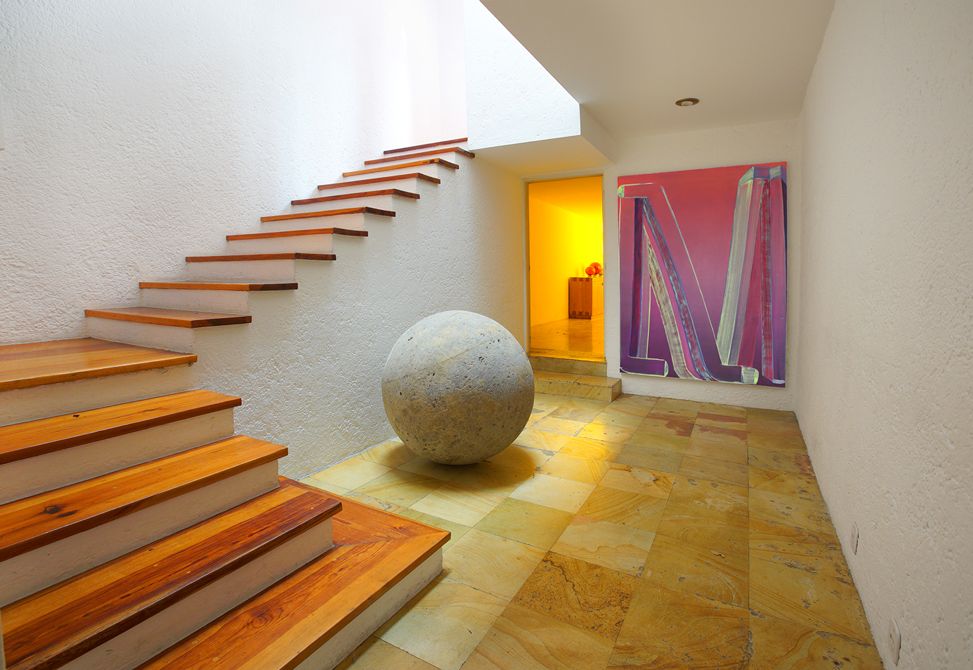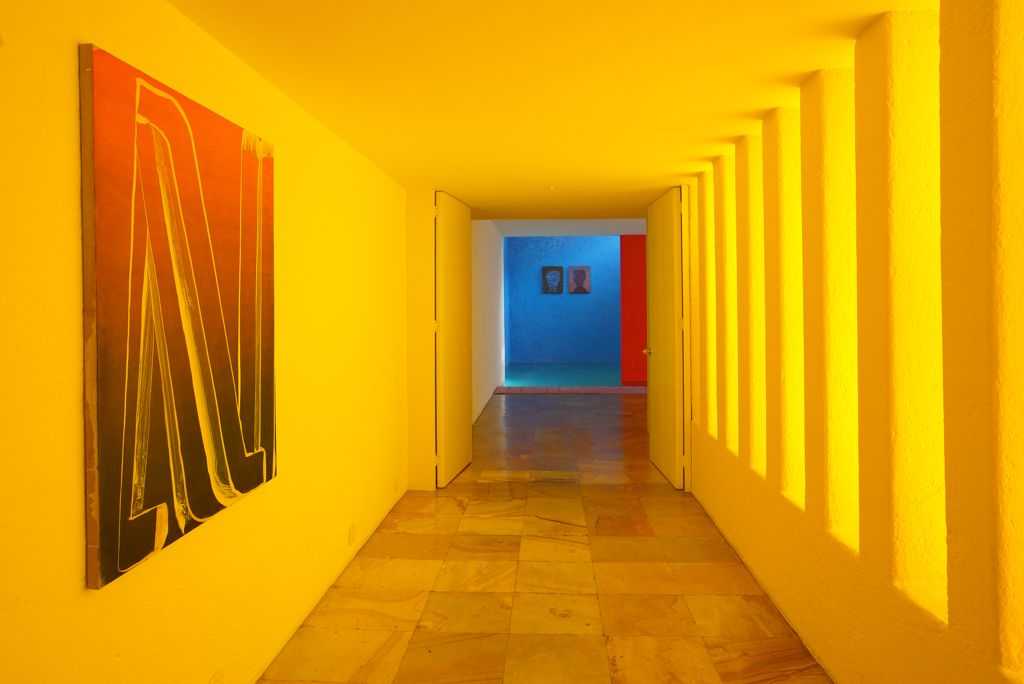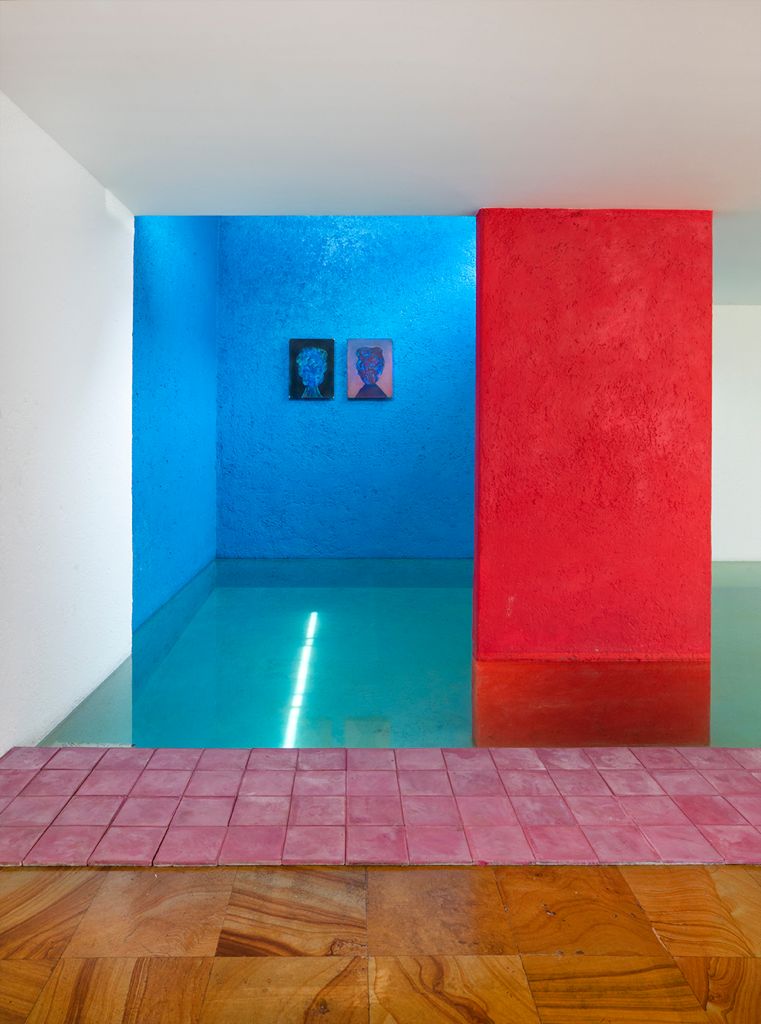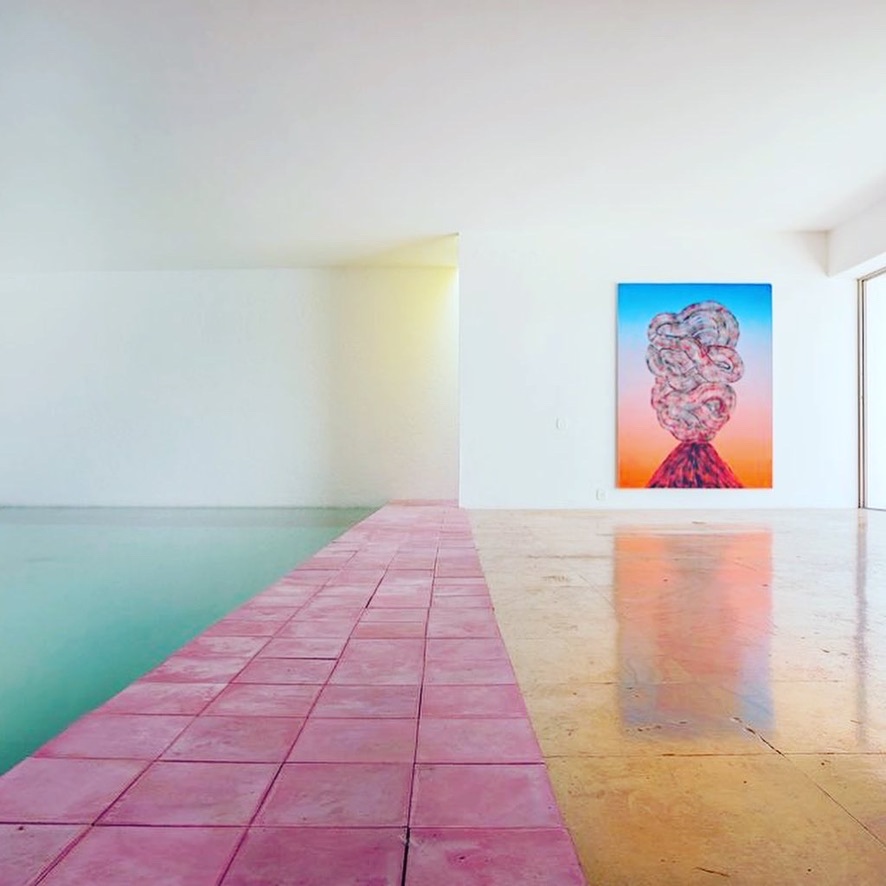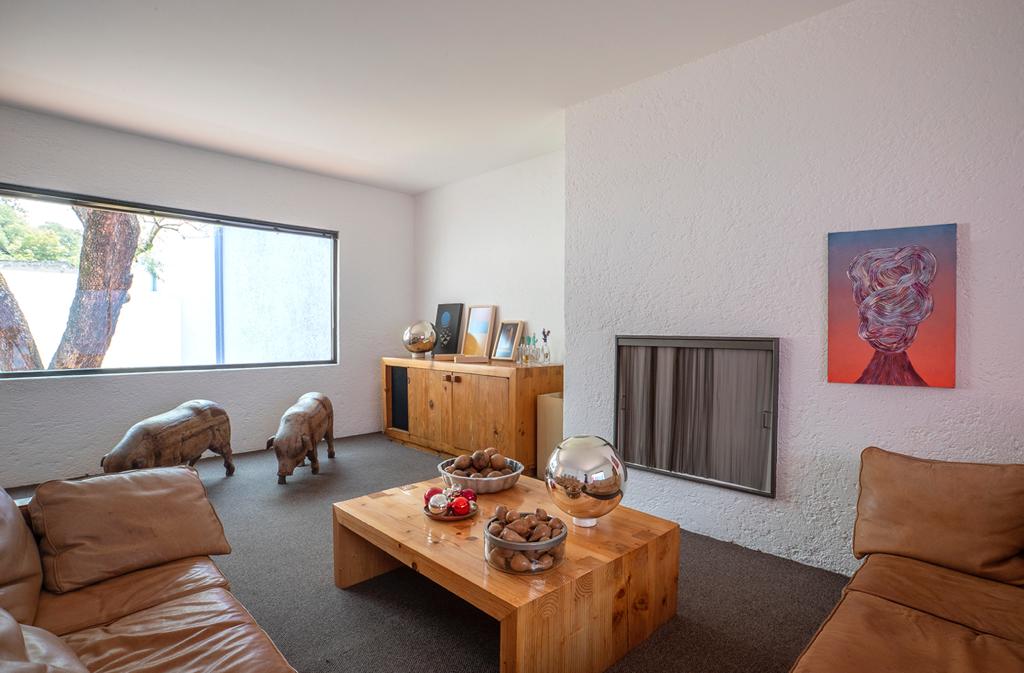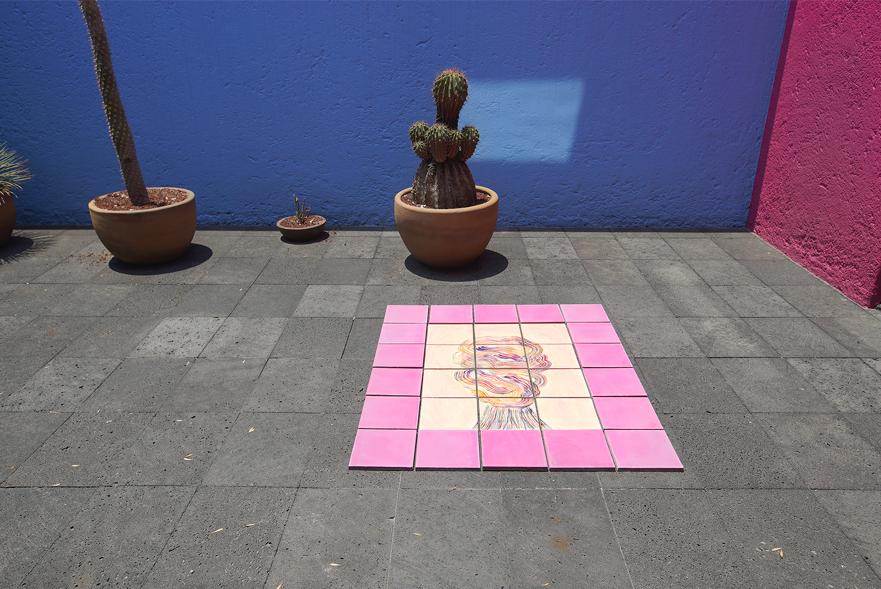Title
Robert Janitz
Casa Gilardi, Mexico DF
28 April–2 May 2021
Content
With very few exceptions architecture is seen as neutral ground in the context of an art exhibition. It is the place that embeds the art work creating a soothing perceptive frame that allows its content to unfold. One of these exceptions is with certainty the architecture of Luis Barragán: Casa Gilardi is everything but a white cube in its use of colors that openly competes with any painting hung in its proximity. It is a three-dimensional painting itself in dialogue with nature and its surroundings. The importance of color in the oeuvre of the great Mexican architect has been repeatedly a subject in literature: “For Barragán, light and colour qualifies and transforms space and he used it with the same freedom as a painter, trying out different solutions. (…) Johannes Itten, Josef Albers and Kandinsky are immediate references as one experiences three-dimensional colour interactions, with interplays of depth of colour and shape, interactions of planes of colour in terms of adjacent volumetry, juxtaposition of tones and the result of the various scenarios that the observer creates, when visually interacting with the pool.”
Interestingly the spatial concept of Barragán applied to Casa Gilardi works against the grain of the white cube. The walls of a room are rarely ever painted in an uniform color. Through color the architect detaches the wall from its architectural body releasing it into a solitary state, overcoming any simplistic Cartesian concept, not unlike a canvas that becomes a window into the world.
But what happens when a painter is invited over to the house of an “architect-painter”? The color scheme of Robert Janitz is as vibrant as Barragán’s. It is all about extreme pairings of complementary colors unleashed to compete with each other. While Barragán, the monochromist, could be considered a distant cousin of the Tucson, Arizona based Swiss painter Olivier Mosset, Janitz brings an important additional layer to the table. His colors are further energized by a system of hieroglyphic signs that he applies in an almost somnambulistic state of mind. Using thick bill-sticker brushes he creates a visual language that is close to the aesthetic of the street as e.g. the weathered surfaces of billboards, the traces of wet glue behind freshly installed posters, but also graffiti, especially the ones made with fire extinguishers. Compared to Europe where most of the inner city streets are cleaned and manicured to the max, the streetscapes in Mexico City contain a plethora of painterly signs, all made by accident or chance. The paintings of Robert Janitz transport the street into the house, inviting yet another layer of vernacular aesthetic in. The gestural energy contained in his paintings reflecting the performative act of creation, ad a different human sense of dimensionality.
Produced by Archivo Colectivo, Bernardo Saenger, Mexico City
Press
New York Times Magazine, Published April 29, 2021
